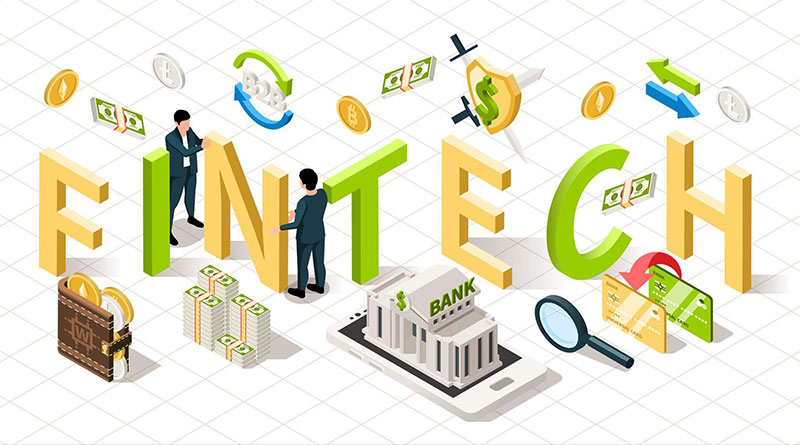Beyond the Login: Multi-Layered Security for Fintech Users

Using a username and password simply isn’t adequate security in the financial sector anymore. It’s the sad truth, but living in this modern era has brought us all to this same conclusion. No matter the industry you’re in, or even if you’re just a curious individual.
Companies in financial technology (fintech) have to apply multi-layered security procedures to protect their customer’s sensitive data from perpetually evolving cyber threats. Fintech innovations are reshaping the conventional financial sector by providing customers with better, more open, and more convenient options. And this is needed as cyber threats follow up on the same innovation, and find ways to lurk in.
A desire for more rapid, less expensive, and more secure monetary transactions is a key factor pushing this disruption. This has allowed fintech businesses to outperform more typical banks concerning service quality while expanding into new areas.
Come along with us as we discuss the significance of moving beyond the login process and learn how modern security solutions can help you maintain the safety of your data, in surroundings that are becoming more digitized.
Confronting cybersecurity threats in the name of fintech protection
Recent years have seen growth in the fintech business, which has been altering financial transactions through the implementation of digital technology. On the other hand, such convenience brings up serious cybersecurity circumstances.
Companies that deal in intech and store sensitive user information are prime targets for cyber attacks, which might include hacker attacks, threats from insiders, and flaws in the system.
The rising number of cyber attacks, which are expected to grow, can be a source of increasing anxiety. The fintech industry is exposing new risks as it adopts new technologies such as blockchain and artificial intelligence (AI). To be able to protect yourselves against these dangers, your business must implement multi-layered security systems that include strong authentication mechanisms such as biometrics and one-time passwords (OTPs)
It’s essential to have monitoring technologies that operate in real-time since they can quickly identify any irregularities in user activity and prevent fraudulent operations. The adoption of encryption techniques significantly strengthens data security, rendering data that has been stolen or intercepted flawed.
There’s a considerable danger involved in ignoring the growing cybersecurity risk. To resist cybercriminals and maintain customer trust, fintech companies need to enforce adequate security measures as their number one consideration and regularly update their procedures.
The core concepts behind multi-layer security methods
When it comes to the fintech scene, multi-layered security is the most important shield, as it allows for the protection of user data and financial assets through different defensive measures.
Through the use of this strategy, security protocols are stacked to prevent unwanted access and ensure the safety of user accounts.
Whether it comes to security, multi-layered security is based on the concept of “defense in depth,” which is similar to adding multiple layers of locks to a safe to increase its resistance against intrusion. Authentication is the foundational layer, using credentials such as passwords, personal identification numbers (PINs), or biometrics to authenticate the user’s identity.
Multi-factor authentication (MFA) is used with login credentials to support security. This form of authorization demands multiple levels of verification. Encryption is the process of transforming data into a code that cannot be read, guaranteeing secure transmission and preventing thieves from intercepting your communications.
At the same time that frequent software updates strengthen defenses by patching vulnerabilities, firewalls serve as sentinels, protecting against outside influences such as malware. Continuous monitoring, which offers real-time alerts, makes it possible to react quickly to any potential security breaches.
To construct an invincible, fortified structure that protects user data and efficiently defends against cyber attacks, fintech companies must have a solid knowledge of multi-layered security.
Increasing the safety in fintech with transaction monitoring software
Based on our personal experience, we can say that online payments and transactions are significantly faster and easier. However, it is important to be vigilant and prepared to defend against criminals who may try to take advantage of this.
Software that observes transactions is becoming an increasingly important line of defense for fintech companies. This software makes use of real-time data analysis and sophisticated algorithms to detect and prevent fraudulent acts on time.
The key feature of the software is its early threat detection capacity, which allows it to quickly spot abnormalities or suspicious behaviors in transactions while simultaneously preventing further possible damage. To surpass the level of complexity of cyber criminals, it must be able to respond to ever-changing fraud schemes, harnessing AI and predictive analytics.
Also, with the provision of detailed reports on anti-money laundering (AML), and know your customer’s (KYC) requirements, the best transaction monitoring software contributes to regulatory compliance. It protects user data by providing continuous surveillance against attempts to access accounts without authorization and aberrant account actions, in addition to ensuring compliance with regulations.
The automation of these operations also helps to streamline fraud detection procedures, which in turn reduces the expenses associated with human labor and enables resources to be redirected to strategic initiatives. In general, the actualization of transaction monitoring software builds up the security of fintech platforms, hence building user confidence and resistance against various online dangers that are always emerging.
What can AI do to protect fintech?
The development of fintech companies, which provide novel digital tools for banking, lending, investing, and payments, has ushered in a technological revolution in the financial industry. With more and more things moving online, people are worried about the security of their private financial and personal data kept on these platforms.
Artificial intelligence appears to be a critical tool for improving financial security. By imitating human intelligence and behavior, AI improves security by identifying potential risks, blocking fraudulent activity, and protecting user information.
AI can additionally help by identifying possible safety issues, such as phishing attempts or social engineering assaults, and it can be accomplished through the use of natural language processing (NLP) algorithms. These algorithms examine text data derived from customer contacts, emails, or chatbot activities.
When processing massive volumes of user-generated data, AI’s data analysis abilities come in handy, enabling the quick detection of suspicious patterns or anomalies that humans would miss. To adapt to the constantly changing strategies of cybercriminals, machine learning algorithms are always working to improve their ability to differentiate between genuine and fraudulent transactions.
AI-driven authentication systems make use of biometric technologies like facial recognition and behavioral biometrics. For the purpose of authentication, these systems set one-of-a-kind behavioral patterns and physical traits, thereby enhancing security. Compared to older methods, these technologies offer extensive user verification, which is also protected.
Build trust through transparency and communication
Proper interaction and openness are significant in establishing confidence in fintech security measures. To prove that they are serious about preserving customer’s private data, fintech companies should tell their customers about the security measures they have put in place.
To be transparent is to lay out the safety precautions used to protect user data and to be clear about how data is gathered, stored, and used. Users are better able to trust the service because they are informed about how they are protected. Also, only open and honest communication can maintain confidence in fintech safety features.
Companies should keep users informed about security updates, possible risks, or data breaches regularly, being upfront all the way. Customers have faith in a company when they receive timely and informative interactions that answer their questions and solve their issues.
The fintech company may be able to count on consumer optimism and word of mouth if they can fix users’ problems and protect their interests.
Further, it matters to have easily available channels for user comments and inquiries to promote confidence and trust. Fintech companies show their dedication to accountability and transparency by giving people a way to talk about their worries and ask questions about how they keep data secure.
The goal of proactive transparency and communication in fintech security should be to make users feel educated, empowered, and safe about the security of their financial transactions.
Prioritize multi-layered shield for a safe fintech future
Mandatory elements of multi/layered security include patch management and regular testing for vulnerabilities. By checking for security gaps regularly, businesses may fix them before hackers can take advantage of them. For this reason, it may be wise to put resources into your fintech company’s success by hiring the right people and using the right tools.
Just be tactful and smart about it. Having multiple layers of security is no longer a luxury for fintech companies; it is an absolute necessity.
It is critical to stay updated with the latest security technology and continuously review and improve existing security measures to ensure the highest level of protection for fintech users.
Stay curious, and stay alert.
- Discover New Music with Apps Like SoundCloud - June 25, 2024
- A Comprehensive Guide to JavaScript Arrays - June 25, 2024
- Edit Audio With Apps Like Audacity - June 24, 2024








